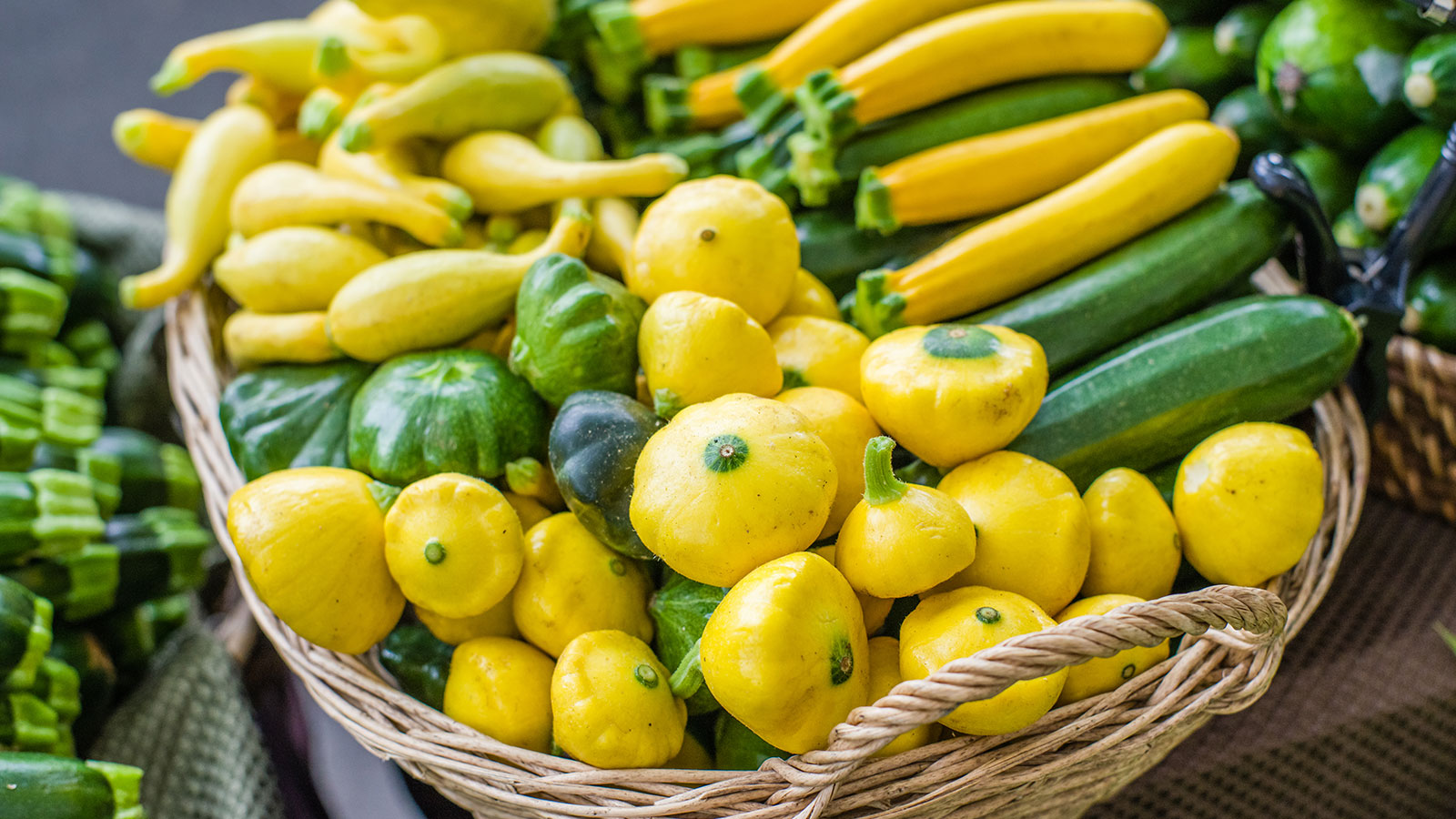Harvesting summer squash – how and when to pick for the best crop
Our expert tips for harvesting summer squash at their best will ensure the tastiest results


Harvesting summer squash at just the right time is vital if you want to the benefit of the best taste and texture.
An easy vegetable to grow, summer squash is an excellent addition to your vegetable garden ideas and a great way to encourage green thumbs in younger gardeners. They come in all manner of shapes and sizes, making them fun to grow – and they are also delicious to eat.
Although they are sprawling plants, they can also be grown in large vegetable garden containers for smaller yards and still give you a generous crop.
What are summer squash?
Squash are divided into two varieties that are harvested in summer and winter.
Summer squash such as zucchini, patty pan and straightneck and crookneck varieties are thin skinned and best eaten when they are freshly harvested.
One of the easiest vegetables to grow, they start producing fruits from midsummer, and with regular picking will keep cropping almost until the first frosts.
They don’t store as well as winter squash, which ripen later in the year and include butternut, spaghetti and acorn squash. But like harvesting butternut squash, the timing for harvesting summer squash is just as important if you want the best flavor.
Design expertise in your inbox – from inspiring decorating ideas and beautiful celebrity homes to practical gardening advice and shopping round-ups.

Patty pan are a brightly coloured, fun-to-grow variety of summer squash
Harvesting summer squash
The flesh of summer squash is at its best and tastiest when they are picked young. If they are left too long on the vine they grow large and hard-skinned and they can start to taste bitter.
The ideal size is around 6-10in long or wide, depending on the shape of each variety.
When ripe they should be cut free using scissors or a sharp, clean garden knife. Leave a length of stem attached to the fruit to extend their storage life.
It is important to check plants every couple of days, as the more squash you pick, the more will grow. If you leave them to grow large, the plants will stop producing.

When summer squash are ready to harvest, cut them free with a sharp knife or garden pruners
Storing summer squash
Once you have harvested your summer squash, wipe them clean with a damp cloth and store them in the fridge in reusable mesh food storage bags, like these washable ones on Amazon. They will store healthily for up to four days.
Damaged or bruised fruits won’t last for long, but they are suitable for soups and stews if you remove the damaged flesh.
If you have left the squash on the vine for too long, their skins will start to harden. These are not worth keeping and should be added to the compost heap.

Use mesh food bags to store summer squash in the fridge
FAQs
How do I grow summer squash?
Whichever US hardiness zone you live in, summer squash are tender vegetables and need constant warmth to grow well.
Plant seeds in small pots of general purpose potting soil, like this one by Sun Gro Horticulture from Amazon, in a frost-free greenhouse or on a warm, light windowsill. Keep the compost damp, not sodden, and the seeds will soon germinate
They can be planted into the yard when frosts have finished. Harden them off before planting out by placing them under a cloche during the day, like these plastic ones with anchoring pegs on Amazon, returning them inside at night for the first week.
Then move them to a sheltered spot in the yard for another week or two, keeping an eye on the weather and outside temperatures, before planting them where you want them to grow.
How do I care for growing summer squash?
Mulch your squash after planting to enrich the soil, and water them generously once fruits start to form.
Regular watering will also help prevent powdery mildew, a common fungal disease that often bothers squashes and develops when the soil is dry and plants are growing close together, or are trailing and have lots of large leaves that block ventilation.
They should be fed once a fortnight with a high-potassium tomato fertilizer, like this one by Great Big Tomatoes on Amazon, to encourage good flowering and fruiting.
Watch out for squash vine borers, grubs that burrow into plants destroying stems, flowers and fruits. They are a nuisance but can be treated with an organic pesticide or nematode.
We advise against using sticky fly papers as they will catch and kill garden pollinators and beneficial insects that prey on pests.
If your summer squash plants produce flowers but they rot without producing fruits, it is because they have not been pollinated. Luckily, this is easy to do by hand.
First of all, make sure you know which are the female and male flowers – female flowers have a small bulge at their base, the more numerous male flowers do not.
Remove the petals from a male flower and brush the pollen-covered stamen and anthers in the centre of the flower over the sigma in the middle of the female flower.
This will cause fertilization and fruits will soon form.

Ruth is a Contributing Editor for Homes & Gardens, and formerly Gardening Editor of Amateur Gardening magazine. She is horticulturally trained, with a qualification from the Royal Horticultural Society. Her work for Amateur Gardening, the world's oldest weekly gardening publication, involved matching gardening tasks with each season, covering everything from sowing and planting, to pruning, taking cuttings, dealing with pests and diseases and keeping houseplants healthy. She is an expert in ornamental plants and edible crops, and everything she writes about and photographs is in her own garden, that has been a work in progress since her family moved there in 2012.